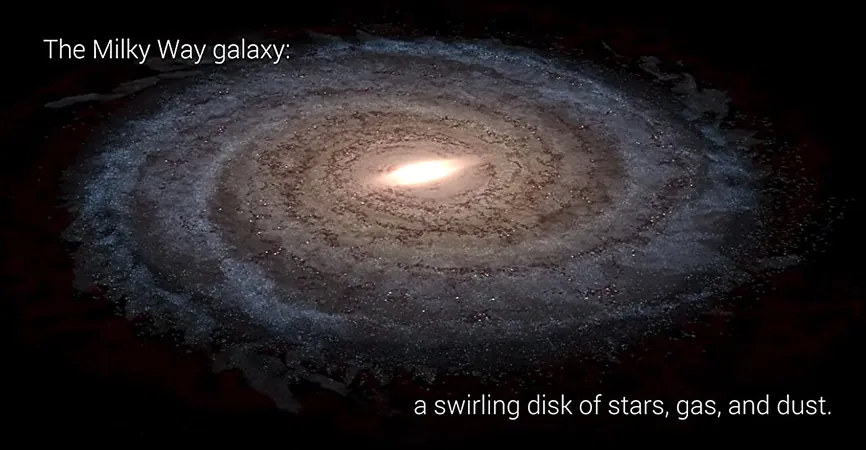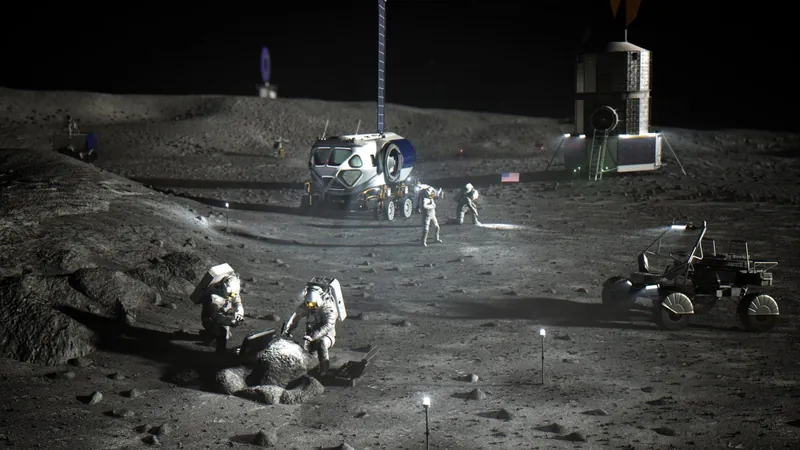
Unlocking the Secrets of the Milky Way: NASA's Roman Telescope Set to Transform Galactic Understanding
2025-09-16
Author: Amelia
NASA's Groundbreaking Mission: The Roman Space Telescope
Prepare for a cosmic revelation! NASA's Nancy Grace Roman Space Telescope is gearing up to revolutionize our understanding of the Milky Way galaxy by focusing on its dimmer, less glamorous elements—gas and dust that drift among the stars, collectively known as the interstellar medium.
Mapping the Galactic Landscape
One of the telescope's most ambitious projects, the Galactic Plane Survey, will delve deep into our galaxy, charting a staggering 20 billion stars—four times the number currently mapped. With this data, scientists aim to piece together a detailed image of the Milky Way’s structure, new star formations, and even the origins of our own solar system.
"With Roman, we'll transform artistic representations of the Milky Way into data-driven models, revealing a 3D landscape behind the clouds of interstellar dust," says astrophysicist Catherine Zucker from Harvard & Smithsonian.
Clearing the Cosmic Fog
Current observations give scientists a rough idea of our galaxy's shape, but dust clouds obscure critical details, like trying to navigate a neighborhood while peering through a thick fog. Thankfully, Roman's specialized technology will cut through this confusion by utilizing infrared light, which travels more easily through dust than visible wavelengths.
This enables astronomers to determine how much dimmed, reddened starlight filters through this cosmic fog, offering insight into the very properties of the dust itself.
Decoding Galactic Origins
Armed with this treasure trove of data, scientists will dissect the interstellar medium, unraveling its composition and the dynamic processes behind its variations. Insights from dust-influenced starlight will allow for intricate 3D dust maps, enabling researchers to visualize how our Milky Way appears from the outside and position it within the broader framework of galactic evolution.
The Interstellar Medium's Role in Cosmic Creation
The interstellar medium isn't just passive; it plays a pivotal role in birthing stars and planets. Dense clouds within this medium collapse under gravity, sparking the initial stages of star development, while young stars help to forge planetary systems from surrounding dust.
"Dust is a key to understanding our origins—Earth itself is built from countless tiny grains that coalesced into the planet we know today," states Josh Peek, an associate astronomer at the Space Telescope Science Institute.
Charting the Galaxy's Structure
Beyond just tracing newborn stars, the Roman Telescope will refine our understanding of the Milky Way's spiral structure, where gas, dust, and stars gather in cosmic traffic jams. Scientists now debate whether this spiral pattern stimulates star formation or remains stagnant.
Roman will address these cosmic enigmas, comparing dusty regions across the Milky Way, leading to insights on star production within its iconic spiral arms and central regions.
An Open Gateway to Cosmic Discovery
As preparations for the Galactic Plane Survey reach their final stages, the astronomical community eagerly anticipates the flood of data. Once processed, this information will be publicly accessible via platforms like the Roman Research Nexus, ensuring that even future generations can engage in groundbreaking analyses.
"We’re handing down something remarkable to those yet to be born—a legacy that will continue to inspire explorers of the cosmos," Peek adds with excitement.
Countdown to Launch!
Set your calendars! The Roman Space Telescope is projected to launch no later than May 2027, with hopes for an earlier deployment as soon as fall 2026. Get ready as we prepare to uncover the magnificent secrets of our cosmic home.









 Brasil (PT)
Brasil (PT)
 Canada (EN)
Canada (EN)
 Chile (ES)
Chile (ES)
 Česko (CS)
Česko (CS)
 대한민국 (KO)
대한민국 (KO)
 España (ES)
España (ES)
 France (FR)
France (FR)
 Hong Kong (EN)
Hong Kong (EN)
 Italia (IT)
Italia (IT)
 日本 (JA)
日本 (JA)
 Magyarország (HU)
Magyarország (HU)
 Norge (NO)
Norge (NO)
 Polska (PL)
Polska (PL)
 Schweiz (DE)
Schweiz (DE)
 Singapore (EN)
Singapore (EN)
 Sverige (SV)
Sverige (SV)
 Suomi (FI)
Suomi (FI)
 Türkiye (TR)
Türkiye (TR)
 الإمارات العربية المتحدة (AR)
الإمارات العربية المتحدة (AR)